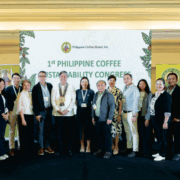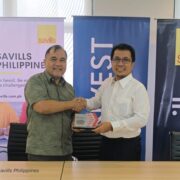A legacy of land injustice

The adoption of the Regalian doctrine during the Spanish colonial period marks a pivotal and damaging event in the history of land use in the Philippines. The doctrine, which declared that all land in the country belonged to the Spanish Crown, fundamentally altered the traditional land ownership systems that indigenous peoples (IPs) had followed for centuries.
This shift not only undermined the rights of IPs to their ancestral lands but has also led to issues with land tenure that continue to affect the country today. The lasting impact of the Regalian doctrine, reinforced by successive colonial powers, has shaped contemporary land use and ownership in ways that disproportionately affect indigenous communities.
Before Spanish colonization, land was not treated as private property but as a shared resource, with collective stewardship by the community. Land was viewed as a living entity to be respected and preserved for future generations. The Regalian doctrine severed this connection, replacing communal stewardship with a model of state control that marginalized indigenous land rights.
Throughout the Spanish colonial period, land was seized from IPs and transferred to the Crown or granted to local allies. This dismantled indigenous land use practices which were replaced with exploitative structures. Its impact persists today, as IPs continue to struggle for their ancestral territories against private corporations and government-backed development projects that squeeze profit from land that the IPs have cared for since time immemorial.
Recent developments underscore the ongoing struggle of IPs to defend their land rights. According to a newspaper report, nearly half of all mining projects and 87 percent of large-scale logging activities in the Philippines are in areas that overlap with registered ancestral domains. This encroachment violates IP rights and facilitates the unchecked exploitation of natural resources that contrast sharply with indigenous practices of sustainable land stewardship, which prioritize long-term ecological health over short-term economic gain.
An example of IP resistance happened in January 2023, when the Tumandok communities in Capiz led protests against mega dam projects that threatened to displace them from their ancestral lands and destroy vital rivers and forests. Unfortunately, policies that favor state and corporate interests over Indigenous rights persist despite the legal recognition of ancestral land rights in both the 1987 Constitution and the Indigenous People’s Rights Act of 1997. The government continues to permit private entities to exploit these lands for profit, often disregarding the rights and needs of the IPs who live there.
Rather than perpetuating colonial-era land policies, it is critical that the Philippines transitions to a system that respects indigenous rights to self-determination and land stewardship. There must be a concerted effort to acknowledge the value of IP knowledge and practices in sustainable land management. Their expertise should be leveraged to ensure that their lands are preserved—not just for their communities but for the benefit of the entire nation.
Studies have shown that indigenous lands are critical to global biodiversity. According to the International Institute for Sustainable Development, indigenous territories worldwide contain 80 percent of the planet’s remaining biodiversity. In the Philippines, indigenous communities control the majority of the country’s biodiversity hotspots, which house unique species of flora and fauna found nowhere else in the world. These areas are crucial to maintaining environmental health, providing habitat for wildlife, and vital ecological services.
Indigenous groups in the Philippines are already leading efforts to restore ecosystems and mitigate climate change. For example, the Bukidnon Umayamnon group in Mindanao is addressing deforestation and soil degradation through sustainable practices like planting bamboo and cocoa that help prevent erosion, restore soil health, and contribute to carbon sequestration. The community also uses bamboo to build resilient homes that can withstand extreme weather events.
—————-
Nina D. Resurreccion is a junior research associate and graduate student at the University of the Philippines School of Urban and Regional Planning. She graduated from the Ateneo de Manila University in 2022 with a degree in sociology.

















